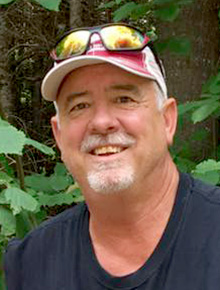
What can you do this time of year that is outdoors- related? One of them is to start practicing whatever shooting discipline you enjoy.
I have a really hard time understanding how some of my avid pheasant hunting friends will comment when they head out on opening day that they never practiced shooting all summer.
I am a shotgun guy through and through. I expend hundreds if not thousands of rounds practicing so when that wily rooster pops up in front of me, he ends up in my hunting vest.
When it comes to rifle shooting, I am a complete amateur. I have never really had a desire to be one of those super intense guys or gals that can put five shots on a target at 500 yards or longer and all of the bullet holes touch each other in the bull’s eye.
This was until about three years ago. My Pheasants Forever chapter hosts a veterans appreciation hunt every year, and I met a guy named Todd Van Langen. He is a 25-year special forces veteran who is now completely disabled. He still gets around OK but can no longer serve his county. The man is well recognized as one of the best shooters in the world.
As a thank you for inviting him to our event, he offered to put on a long-range shooting clinic as a fundraiser for our chapter. This will be the third year he has traveled from Fort Bragg, North Carolina, to Worthington to instruct such a class. The dates of this year’s class are May 21 and 22.
The class is limited to 12 participants, and the cost is $750 per shooter. A husband-wife team is counted as one shooter, and any adult child pairing is also considered one shooter for fee purposes. I watched and organized the first class and actually took the class the second year.
We had a variety of different skill level participants over those two years, ranging from dedicated shooters wanting to improve their skills to the average deer hunter wanting to gain some confidence when putting the crosshairs on a big deer, elk or other big game.
The class touts that any participant will be able to make accurate shots out past 700 yards with confidence.
I looked at myself and said that sure isn’t going to be the case for me. Todd went back to North Carolina and built me a rifle from a vast array of spare parts he had accumulated over the years.
They are called skeleton guns. I have a hard time telling a $10,000 rifle from an $800 one. Other shooters had some specialty guns made specifically for long-range shooting, and others had $350 guns purchased from their uncles.
The two-day class has a half day of class time instruction and 1 1/2 days of pure range shooting. I have a range set up on one of my wildlife properties that allows for shots out to 880 yards.
Todd once told me that long-range rifle shooting is all math. You do the calculations, make adjustments and pull the trigger. Wing shooting, on the other hand, is all instinct.
There is no ballistics table you can use to determine the lead on a pheasant winging 45 mph angling away at 45 degrees with an uphill trajectory of 20 degrees in a 30-mph wind.
We used some very sophisticated apps on my phone to dial in all of the math calculations for the velocity, weight and ballistic coefficient of the bullet along with wind speed and direction. After a basic understanding on my part, I went to the range with 11 other shooters to see what we might be able to accomplish.
Ten of the 12 participants had never shot at a target more than 300 yards away. By the end of the two days, each and every shooter including me was hitting the 880-yard target three out of every five attempts on average. Some did even much better than that.
I am now hooked deep into this very challenging pastime. The limiting factor for me is the competition for time from other outdoor activities and the cost of ammunition.
If you would like some more information about this very unique opportunity, reach out to me at scottarall@gmail.com. All proceeds will benefit wildlife habitat across Minnesota.
The class is limited to 12 participants, and three of the spots are already filled. Act now to become a better shooter even if your goal is small holes in paper targets or a clean kill on the buck of a lifetime. You might very well get hooked like I did.
Scott Rall, Worthington, is a habitat conservationist, avid hunting and fishing enthusiast and is president of Nobles County Pheasants Forever. He can be reached at scottarall@gmail.com. or on Twitter @habitat champion.



